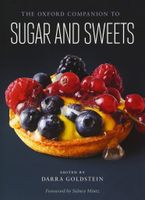Advertisement
Modern Sugar Trade
Published 2015
The proportions of cane sugar and beet sugar reversed in the early twentieth century as a result of changes in the system of agricultural tariffs; however, the real challenge to the growing dominance of beet sugar was posed by the rising power of the American market for sugar, which had been gathering strength since the late nineteenth century. In this period of American expansionism, U.S. investors and imperialists, who (often in tandem) maintained active political and commercial interests in Caribbean and Latin American territories as well as in Hawaii, promoted the expansion and intensification of cane sugar cultivation in these territories to profit from this domestic market. They also lobbied for the removal of import tariffs on cane sugar. See sugar barons and sugar lobbies. Nowhere was this pattern more fully and successfully put into practice than in Cuba, which, by 1918, had grown to be the world’s largest sugar producer, based entirely on sugarcane. The global context for Cuba’s rise was the devastation of Europe’s sugar beet production during World War I.


